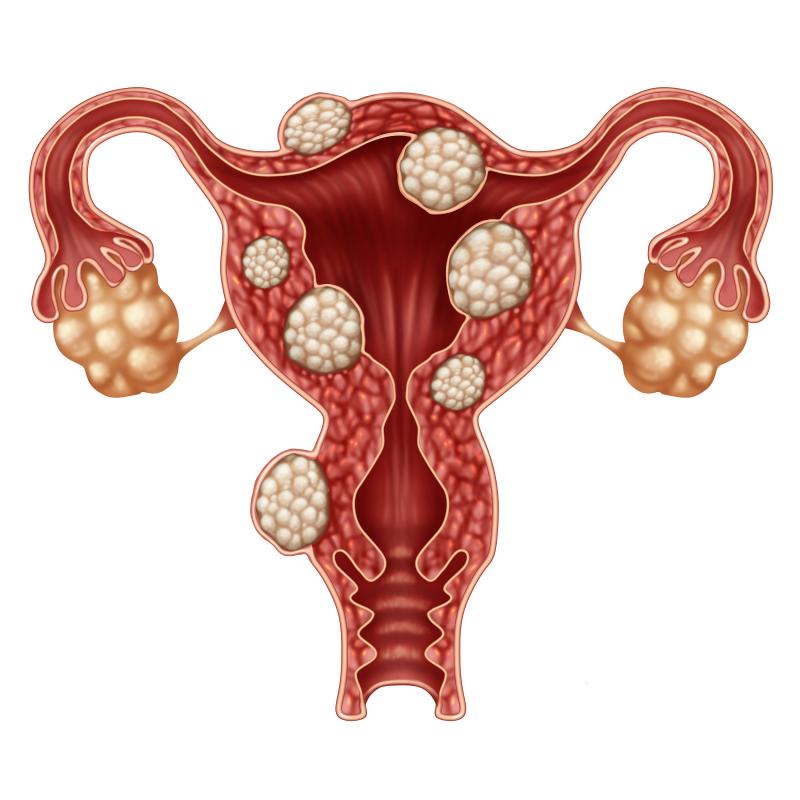
Treatment with the oral gonadotropin-releasing hormone (GnRH) receptor antagonist relugolix in women with uterine fibroids is well tolerated and produces significant reductions in pain symptoms, according to data from a phase III trial.
“Furthermore, consistent with the positive results from another phase III study in Japanese women with uterine fibroids that reported reductions in heavy menstrual bleeding, this study confirms the benefits of 40 mg/d relugolix on symptom severity and quality of life and suggests that relugolix can be a potential treatment option for women with uterine fibroids,” the investigators said. [Obstet Gynecol 2019;133:423-433]
In the trial, 65 premenopausal Japanese women with moderate-to-severe uterine fibroid–associated pain were randomized to receive relugolix 40 mg (n=33; mean age, 40.5 years) or placebo (n=32; mean age, 42.6 years) once daily for 12 weeks. The Numerical Rating Scale (NRS) score was used to record pain symptoms every day from screening to week 12 or early termination by patients.
The mean maximum NRS score was 6.6 in the relugolix group and 6.3 in the placebo group. Intramural was the most common type of uterine fibroid (66.7 percent vs 90.6 percent, respectively), followed by subserosal (51.5 percent vs 28.1 percent). None of the patients had the submucosal or cervical type. [Fertil Steril 2019;112:922-929.e2]
Significantly more patients in the active vs placebo arm achieved the primary endpoint of a maximum NRS score of ≤1 during the 28-day period before the final dose of study drug (57.6 percent vs 3.1 percent; odds ratio [OR], 42.1, 95 percent confidence interval [CI] 5.1–346.2; p<0.0001).
Likewise, relugolix yielded better results for all secondary endpoints: proportion of patients with no pain (NRS, 0; 48.5 percent vs 3.1 percent) and percentage of days without pain (96.4 percent vs 71.4 percent).
Pain relief occurred with parallel reductions in myoma (37.4 percent) and uterine volumes (42.2 percent), as well as improvements in Uterine Fibroid Symptom and Quality of Life (UFS-QOL) symptom severity, regardless of the type of uterine fibroid, the investigators pointed out.
In terms of safety, treatment-emergent adverse events (TEAEs) occurred with greater frequency with relugolix than with placebo (87.9 percent vs 56.3 percent), although the rate of treatment discontinuation was low and similar in the treatment arms. Most TEAEs were mild to moderate and included hot flush, metrorrhagia, hyperhidrosis, menorrhagia and viral upper respiratory tract infection.
A novel oral nonpeptide GnRH receptor antagonist, relugolix competitively inhibits GnRH receptors on the anterior lobe of the pituitary, thus inhibiting secretion of follicle-stimulating hormone (FSH) and luteinizing hormone (LH). [J Med Chem 2011;54:4998-5012; Eur J Pharmacol 2014;723:167-174]
“As a result, relugolix decreases blood concentrations of exogenous oestradiol (E2) and progesterone (P) within days and induces amenorrhea. This is in contrast to GnRH agonists, which initially stimulate LH, FSH, E2 and P levels,” the investigators explained.
“GnRH antagonists do not cause clinical flares and have a faster onset of action than GnRH agonists. Furthermore, because of its oral formulation and half-life, relugolix allows a faster recovery of normal hormonal levels and menstruation after discontinuation of treatment, leading to a more rapid recovery of fertility than the injectable depot formulations of GnRH agonists,” they added.
The investigators acknowledged several study limitations, including the absence of an active control, such as a GnRH agonist, and the issue of generalizability of the results to non-Japanese populations.